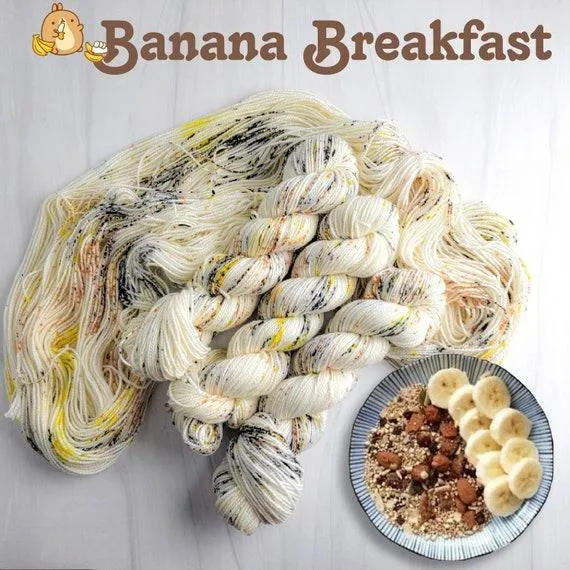Your Guide to Banana Variegata: An Exotic yet Easy-Care Plant
The banana variegata is sure to turn heads with its striking green and cream colored leaves. Also known as the “crested banana,” this unique plant offers eye-catching foliage without the need for fussy care. If you’re looking to introduce some tropical flair into your home or garden, banana variegata could be the low-maintenance choice for you.
What is a Banana Variegata?
Banana variegata (Musella lasiocarpa) is a type of banana plant known for its attractive variegated leaves. As the name suggests, its broad leaves are marked with irregular splashes or streaks of cream and white against a green background. This gives the plant a one-of-a-kind variegated or “crested” appearance.
Unlike edible banana varieties, banana variegata does not produce fruit. Its primary purpose is ornamental—to add aesthetic appeal with dramatic foliage. Height-wise, expect banana variegata to reach 3-6 feet indoors or up to 10 feet when grown outside in warm climates. While striking solo, these plants also combine well in mixed containers or garden beds.
Care Requirements
One of the major plusses of banana variegata is that it is very low maintenance compared to other tropical plants. From my experience keeping a variety of houseplants, banana variegata has been one of the hardiest. Here are a few tips for caring for this attention-grabbingplant:
- Water when the top 1-2 inches of soil are dry. For indoor plants, water weekly.
- Use a potting mix specifically designed for foliage plants, which drains well while retaining moisture.
- Fertilize monthly during spring and summer with a balanced houseplant food.
- Provide bright, indirect light. Too much sun can cause leaf discoloration.
- Keep soil moist but not soggy. Allow excess water to drain well.
- Trim off browned or damaged foliage as needed to encourage new growth.
The good news? Banana variegata is pretty tolerant of deviations from this routine. It may not look as healthy, but it won’t disappear either. Comparably to other tropical species, banana variegata is remarkably sturdy and resilient to less-than-perfect care.

ideal Growing Conditions
While banana variegata can survive modest indoor conditions relatively well, it does best when certain environmental preferences are met:
- Temperature: Banana variegata thrives in warm temperatures between 65-80°F. Cooler zones below 60°F will cause leaf yellowing.
- Light: Provide the brightest possible light short of direct sun for several hours daily. North- or east-facing windows are ideal.
- Moisture: Soil should be kept consistently damp but not soggy. Use a pebble tray under the pot to increase humidity.
- Outdoors: In frost-free zones 9-11, banana variegata can enjoy the warmer months outside for maximum growth.
As a tropical plant, banana variegata prefers growing conditions on the warm and humid side. However, its flexibility also makes it a superb indoor option, even for homes challenged to recreate an authentic rainforest vibe.
Variations and Cultivars
While the typical banana variegata sports streaky cream and green leaves, cultivars have been developed featuring different variegation patterns and colors:
- Banana ‘Marginata’: Striking yellow-edged leaves.
- ‘Feelin’ Groovy’: Bold marbled white and lime foliage.
- ‘Splash’: Irregular splotches of white running through leaves.
- Other cultivars: New introductions may show pink, orange or bicolored variegation. Options are always expanding!
Experiment to see which banana variegata variety suits your aesthetic preferences and growing space best. Different cultivars introduce welcome variety to plant collections.
Tips from Plant Daddy Charles
From my experience as an avid houseplant grower, properly caring for plants is part science and part intuition. Here are a couple final tips when raising banana variegata:

- Inspect leaves frequently for pests. Mealybugs can find variegated plants appetizing. Use neem oil or insecticidal soap at the first sign.
- Repot only when roots emerge from the drainage holes. Use a pot just 1-2 inches larger to avoid root shock.
- Prune off flowering stems before blooms emerge. The plant devotes energy better used for leaf growth.
- Rotate the pot weekly to encourage uniform growth. Leaves may lean towards the light source.
- Admire those flashy leaves! Banana variegata ́s unique appearance is sure to spark joy for any houseplant enthusiast.
With a little TLC following these guidelines, your banana variegata should thrive for many seasons to come. From my experience, patience and observation tend to pay off when finding just the right routine. Any other questions? Just ask plant daddy—I’m always happy to help more customers join the plant parent club!
Comparing Banana Variegata Varieties
| Variety | Appearance | Taste | Uses |
|---|---|---|---|
| Cavendish | Full yellow with green tips | Sweet with low acidity | Fresh eating, cooking, smoothies |
| Red Dacca | Red with green flecks | Sweet-tart with high acidity | Fresh eating, cooking, smoothies |
| White Jamaica | Mostly green with yellow streaks | Sweet-tart with medium acidity | Fresh eating, cooking |
| Orinoco | Yellow with red flecks | Sweet with low acidity | Fresh eating, cooking, smoothies |
| Plantain | Green skin, starchy flesh | Starchy, not sweet | Cooking, frying |
FAQ
-
What is a banana variegata?
A banana variegata is a type of banana plant that has leaves with streaks or blotches of a different color than the normal green leaves. Most banana variegata plants have leaves with yellow or creamy stripes, splotches, or margins.
-
What causes the variegation?
The variegation is caused by a genetic mutation. Basically, there is a problem with how the chlorophyll which gives plants their green color develops in some parts of the leaf. This results in sections that don’t make chlorophyll and look light colored instead of green.
-
Are variegated banana plants less healthy?
Generally speaking, variegated banana plants are as hardy as regular banana plants. The variegation does not usually impact the plant’s health or ability to fruit. In fact, some gardeners think the variegated leaves make these plants more aesthetically pleasing in the landscape.

-
Do the fruit also show variegation?
Interestingly, the fruit produced by banana variegata plants do not usually exhibit any variegation themselves. The fruit develop as normal green (or yellow or red) bananas. Only the leaves are affected by the mutation that causes the different colored stripes or blotches.
-
How do you care for a variegated banana?
The care needs are basically the same as for regular banana plants. They like warm, humid conditions with rich, well-draining soil. Fertilize during the growing season. Unfortunately, variegated sport mutations can sometimes not be stable. So new growth may not maintain the variegation pattern. But carefully grown plants will usually retake their design.
-
Can the variegation be propagated?
It can be tricky to propagate more variegated banana plants. Some gardeners have had success taking cuttings or offsets (side shoots) from variegated mother plants. However, the new plants may or may not retain the variegated leaf pattern. Special care must be given to raise a crop of variegated pups. It’s not a sure thing by any means.
On the one hand, banana variegata plants can add some amusing style to gardens and landscapes. Their creamy striped leaves set them apart from plain green banana plants in a striking manner. At the same time, the genetics that promote variegation seem not fully stable in some cultivars. Perhaps not surprisingly, this genetic quirk does not transfer to the fruit either. Nevertheless, banana variegata are worth a try for foliage collectors seeking a unique look. Despite their rare qualities, basic cultivation is quite similar to standard bananas.
My friend, I hope I have answered your questions about these specially marked banana plants. Lemme know if you need any clarification or have more thoughts! I find variegation mutations in nature quite odd, but gardeners sure do love them for their visual panache. Growing funky plants is an amusing hobby, even if they do vex growers with instability now and then. Are these eye-catching bananas worth the bother for your yard? I am unsure, but it seems many feel they are superb specimen plants.

